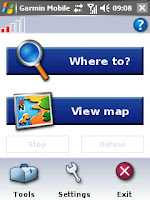
A guide on RSS tool
by: Terry Leslie
RSS is an abbreviation that has evolved in the following manner, depending on their versions:
• RDF Site Summary (also known as RSS 0.9, the first version of RSS)
• Rich Site Summary (also known as RSS 0.91, a prototype)
• Really Simple Syndication (also known as RSS 2.0)
Today, RSS stands for Really Simple Syndication "and it includes 7 existing formats or versions:
• 0.90
• 0.91
• 0.92
• 0.93
• 0.94
• 1.0
• 2.0
RSS tools reference to a group of file formats that are designed to share headlines and other web content (May be a summary or just 1 to 2 lines of the article), links to full versions of content (full article or by mail), and even attachments such as multimedia files. All these data are delivered in the form of an XML file (XML means eXtensible Markup Language), which has the names:
• RSS
• Webfeed
• Feed
• RSS channel
They are generally listed on Web pages as an orange rectangle that has generally letters RSS or XML in it.
RSS can be used to provide any type of information. Some of these "powers" include:
• Blogs food - each blog entry is summarized as a supply point. This blog makes it easier to scan, which allows visitors to zoom in on their subjects of interest.
• Article food - this alert whenever there is new articles and content on the Internet.
• Forum of Food - which allows users to receive messages in the forum and topics for discussion later.
• Table power - which allows users (such as schools, clubs and other organizations) to broadcast events and announce changes to the schedule or agenda of meetings.
• Special discounts or food - this is used to enable users (such as retail and online stores) to "provide the latest specials and discounted offers.
• New ego or surveillance - which allows users to receive "filtered" headlines or information that are based on a phrase or keyword.
• the animal feed industry - technique used by professionals to market, promote, or communicate with current (and future) clients and customers in their industries.
RSS enable people to follow many blogs and information sources at the same time. To generate an RSS feed, all you need is the content or item you want to know and validated RSS a text file. Once your text file is saved to different aggregators (or news readers "), while external site can then capture and display your feeds to update automatically whenever you update your file RSS.
RSS are useful tools for sites to add or change their content on a regular basis. They are particularly used for "web syndication" or activities that involve regular updates and / or publications, such as the following:
• News Websites - as used by major news organizations such as Reuters, CNN and the BBC.
• Marketing
• Bug reports
• staff weblogs
There are many advantages to using the son RSS. In addition to being a great additional method of communication that optimizes the communication needs of different sectors, tools and RSS feeds may also have enormous advantages in your business, especially in the field of internet marketing.
RSS feeds and tools to provide Internet users with a free (or cheap) and easy advertising or online marketing opportunity for their businesses. Here are some characteristics that RSS can help make your Internet marketing strategies more effective.
1. Ease of distribution services for content. With RSS, your company can be captured and displayed by virtually any external website, which gives you an easy way to "spread out" and advertising.
2. Ease content regular updates. With RSS, Web content on your company can now be automatically updated every day (and even hourly). To Internet users will be able to experience "real time" that updated information in your file (for example, new products and other business-related releases) is amended and modified at the same time as the RSS that we subscribed.
3. Tailor content services. With RSS, visitors can have personalized content services, allowing them full control of the flow and type of information they receive. Depending on their interests and needs, visitors can subscribe only to content they need (such as real estate or job listings).
4. Increase (targeted) traffic. With RSS, traffic will be directed to your site as the readers of your content summary (1 or 2 lines in your article) who find them interesting are 'forced' to click on a link to your site.
These are just several of the many things you can do with RSS. The possibilities are endless, and they are all designed to provide you with an effective marketing strategy for your company.
In the meantime, good luck for your journey to success…
And for a limited time, you will also receive a free copy of a limited number of the amazing e-book of 60 pages "52 highly profitable online instant Business Ideas That You Can Steal your own and begin today on a budget very tight! "Who is jam packed with so many ideas you can use to instantly create an automated income for life! This is my gift to you as a way of saying thank you for reading my articles.

















